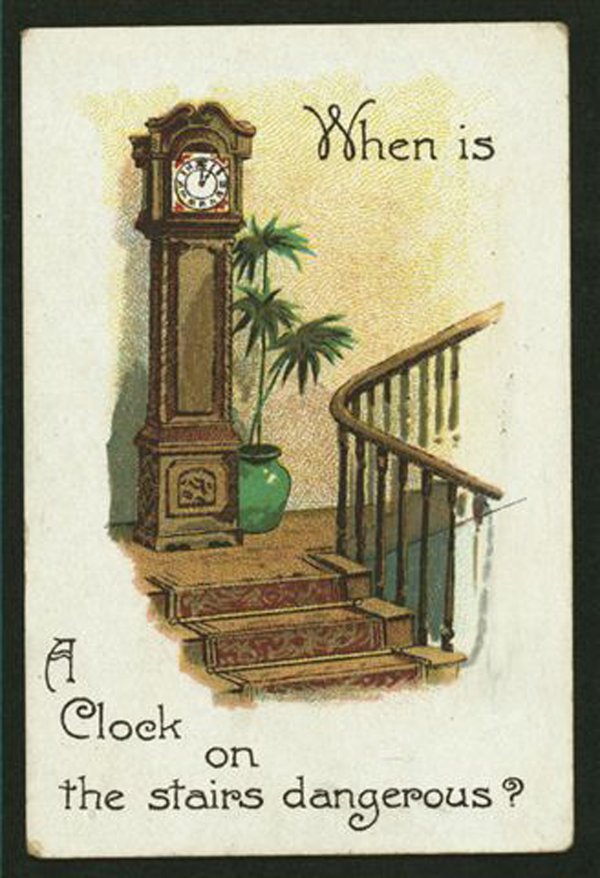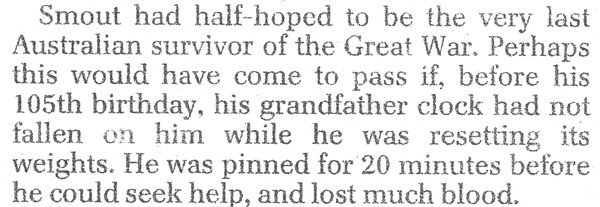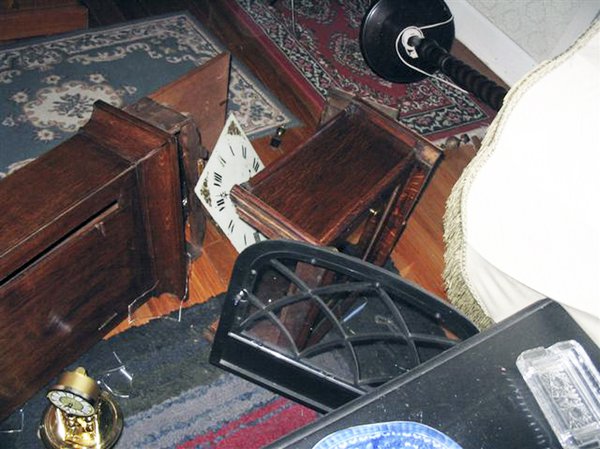Horological horrors
This post was written by Peter de Clercq
Browsing the Digital Gallery of the New York Public Library I found a collection of cigarette cards, issued by tobacco manufacturers as an added incentive to buy their product.
On one of these cards we see a drawing of a longcase clock (the tall, standing type also known as grandfather clock) on a landing, with a riddle: ‘When is a clock on the stairs dangerous?’ The answer is printed on the back of the card: ‘When it runs down and strikes one’.


Jokes aside, longcase clocks can be dangerous, as one of the last Australian survivors of the Great War found out. When he died aged 106, the Daily Telegraph obituary had this lurid detail: two years earlier he had become trapped under his own grandfather clock when pulling up the weights. What an unexpected assailant for a veteran soldier! An AHS member sent me the clipping, after a neighbour of his had had the same misfortune. The lesson: make sure your longcase clock is firmly fixed to the wall.


Of course, there may be situations where you simply don’t have time to do that.
In his latest monthly column ‘Diary of a clock repairer’ in Clocks Magazine, Robert Loomes writes how he delivered a restored grandfather clock to a house in the countryside. Just as he finished setting it up, a squirrel ran into his trouser leg (you couldn’t make it up). Quite understandably, he stumbled and fell, and the assembled clock was dashed to pieces.
In September 2010, an AHS member in the Canterbury region in New Zealand wrote to me: ‘It was a sad day for unsecured longcases last Saturday. There was a major earthquake in Christchurch and at least two friends who had yet to screw new acquisitions to the wall had them tossed across the room and smashed.’
At my request, he wrote a short piece about it for the journal, and supplied a photo of one of the damaged clocks. Sadly, five months later a second, more destructive earthquake hit Canterbury, causing massive destruction and killing 185 people. In that light, it would have been insensitive to print the piece about damaged clocks. Fortunately I could just withdraw it before the journal went to the printer.
